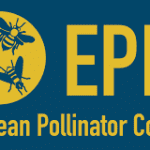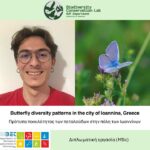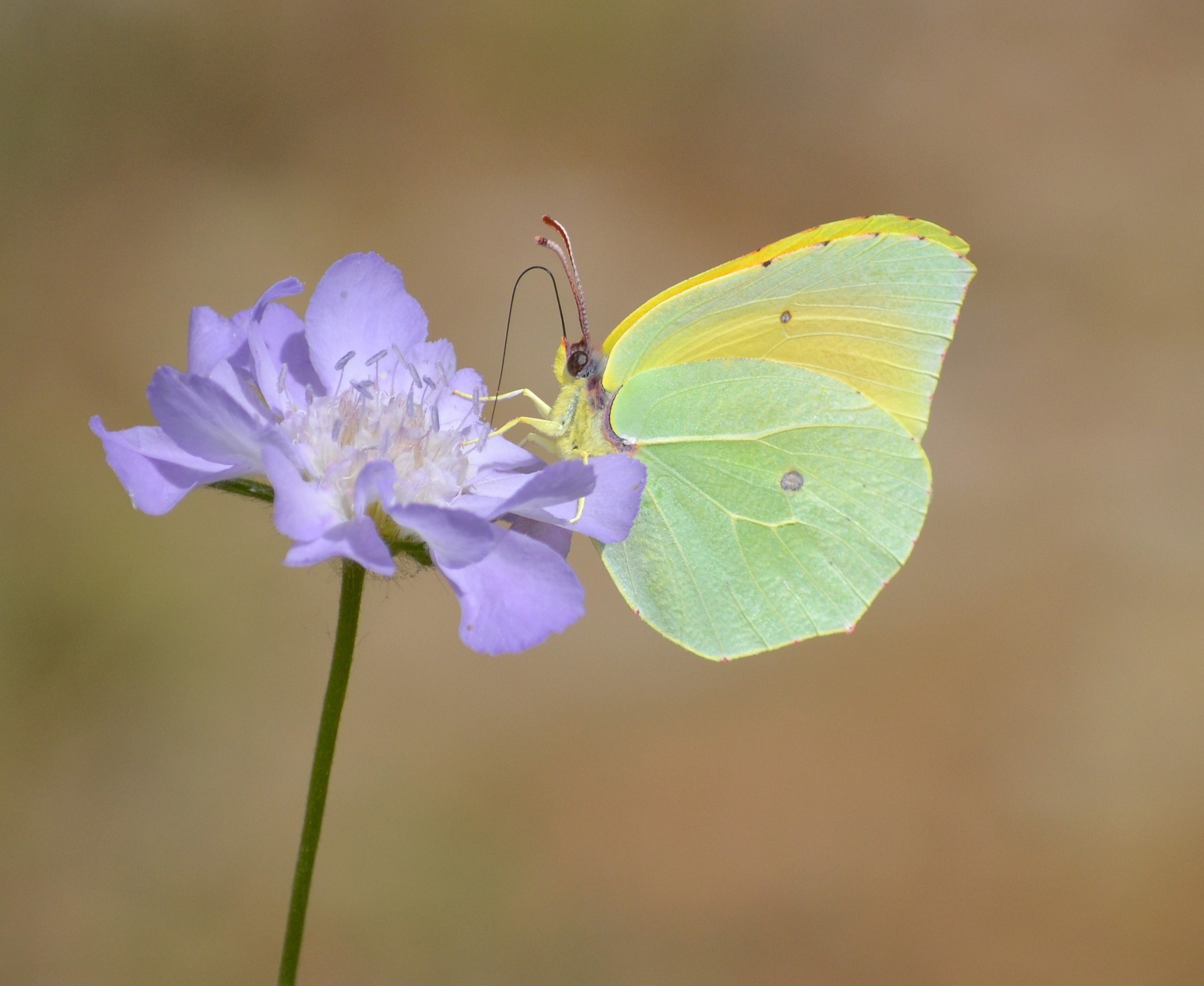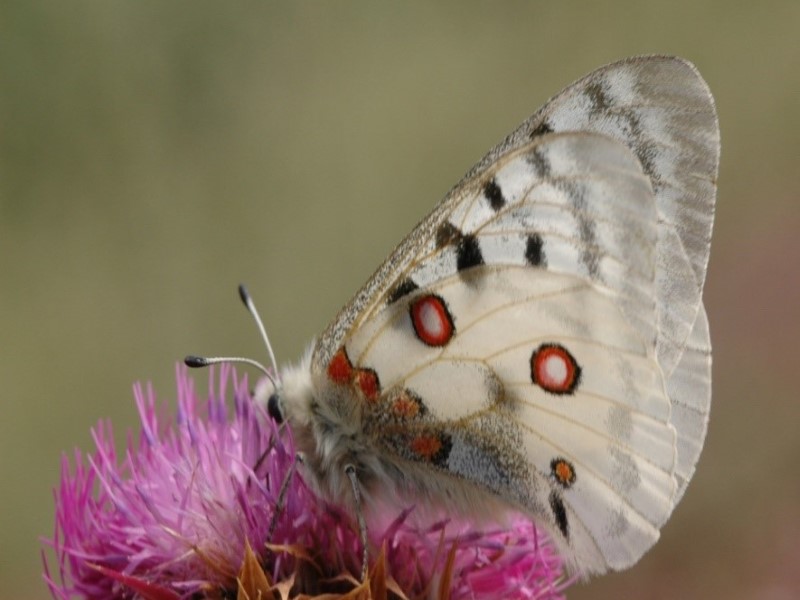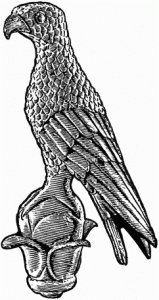APOLLO
Επιστήμη πολιτών
Καθ. Βασιλική Κατή. Συντονίστρια
Δρ. Κωνσταντίνα Ζωγράφου
Δρ. Όλγα Τζωρτζακάκη
Κων/να Νάσιου (Υπ. Διδ.)
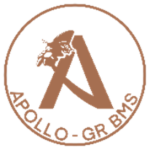
Σκοπός
Parnassius apollo (@A.Aga)
Στόχοι
- Προστασία των πεταλούδων και των ενδιαιτημάτων τους.
- Υποστήριξη του Ευρωπαϊκού προγράμματος παρακολούθησης των πεταλούδων eBMS.
- Προώθηση της εφαρμογής του Νόμου Αποκατάστασης της Φύσης και άλλων πολιτικών που ευνοούν τις πεταλούδες.
- Eυαισθητοποίηση των πολιτών για τις πεταλούδες και το ρόλο τους στη λειτουργία της φύσης.
- Ανάπτυξη δεξιοτήτων των πολιτών στην αναγνώριση των πεταλούδων.
- Αύξηση της συλλογικής γνώσης επί των πεταλούδων και των ενδιαιτημάτων τους στην Ελλάδα.
- Προαγωγή της έρευνας επί των πεταλούδων.
- Προαγωγή της περιβαλλοντικής εκπαίδευσης για τις πεταλούδες.
Το apollo με δυο λόγια
Αν αγαπάς τη φύση, θαυμάζεις τα «ιπτάμενα λουλούδια» και νοιάζεσαι για την προστασία τους, τότε… είσαι υποψήφιος Απολλώνιος εθελοντής. Το apollo είναι το Ελληνικό Πρόγραμμα Παρακολούθησης των Πεταλούδων (gr-BMS). Αγωνιζόμαστε στο φως για την επιστήμη και τη φύση!
Γιατί apollo;
Το βαφτίσαμε “apollo”, από την πεταλούδα Parnassius apollo, σύμβολο της ομορφιάς των άγριων βουνών μας. Παραπέμπει φυσικά και στο θεό Απόλλωνα, αιώνιο έφηβο, θεό του φωτός και προστάτη των καλών τεχνών, μια που οι πεταλούδες έχουν εφήμερο βίο, αγαπούν το φως, και είναι από μόνες τους μια μορφή τέχνης…
Ποιος συντονίζει το apollo;
To Πανεπιστήμιο Ιωαννίνων. Ο συντονιστικός φορέας είναι το Εργαστήριο Διατήρησης της Βιοποικιλότητας (BCL) του Τμήματος Bιολογικών Εφαρμογών και Τεχνολογιών.
Πότε ξεκίνησε;
Το έτος 2021 και συνεχίζει δυναμικά…
Δεν ξέρω τίποτε για τις πεταλούδες. Μπορώ να συμμετάσχω;
Ναι! Όλοι μπορούμε να συμμετέχουμε στο πρόγραμμα- παιδιά και μεγάλοι. Οι τρεις μέθοδοι καταγραφής των πεταλούδων αντιστοιχούν σε τρία επίπεδα δυσκολίας. Πάρε το κινητό σου και τη φωτογραφική σου κάμερα και τις ηλιόλουστες μέρες βγες στη φύση να χαρείς τις πεταλούδες!
Ποια μέθοδο να επιλέξω;
Το πρώτο επίπεδο: Ξεκίνα με τις τυχαίες παρατηρήσεις (R-τυχαία), φωτογραφίζοντας μια πεταλούδα και ανεβάζοντάς τη στο project apollo στην πλατφόρμα i-naturalist. Θα αρχίζεις να μαθαίνεις τα είδη….
Μετά προχώρα στο δεύτερο επίπεδο: προσπάθησε να κάνεις ένα δεκαπεντάλεπτο σημείο καταγράφοντας όλες τις πεταλούδες σε μια περιοχή χρησιμοποιώντας την εφαρμογή ButterflyCount (στα Ελληνικά).
Εν τέλει προχώρα στο τρίτο και πιο σημαντικό επίπεδο: Ξεκίνα μια διαδρομή 300 μέτρων (T-Διαδρομή) καταγράφοντας όλες τις τις πεταλούδες σε μια ζώνη 5 μέτρων καθώς περπατάς, κάνοντας πολλές επαναλήψεις κάθε χρόνο.
Οι περισσότερες πεταλούδες ζούνε μόνο 2-3 εβδομάδες. Για αυτό και οι διαδρομές πρέπει να επαναλαμβάνονται 3-8 φορές το χρόνο! Θα εκπλαγείς με το πόσο θα χαρείς από αυτή τη διαδικασία…
.
Γιατί είναι σημαντικές οι διαδρομές;
Από τις διαδρομές μας, υπολογίζεται ο δείκτης Grassland Butterfly Indicator. Βοηθάς να εφαρμοστεί ο Νόμος Αποκατάστασης της Φύσης. Ψηφίστηκε το 2024 και περιλαμβάνει στους στόχους του την αύξηση των πληθυσμών των πεταλούδων στα αγροτικά οικοσυστήματα και την αναστροφή της πτωτικής τάσης των εντόμων-επικονιαστών, όπως οι πεταλούδες.
Τι υποστήριξη μπορώ να έχω;
Σε κάθε εγγεγραμμένο ενεργό εθελοντή μας προσφέρουμε:
- επίσημη ερευνητική άδεια για δειγματοληψία στη φύση από το Υπουργείο
- οδηγίες για την καταγραφή και αναγνώριση των πεταλούδων
- ηλεκτρονικό βιβλίο – φωτογραφικό οδηγό αναγνώρισης των πεταλούδων “Lafranchis T. 2004. Butterflies of Europe: Identifying Butterflies is Easy – New Field Guide & Key. Diatheo
- τοπικούς οδηγούς-φυλλάδια αναγνώρισης των πεταλούδων (Ήπειρος).
- απόχη στους εθελοντές μας που διενεργούν διαδρομές
- εφαρμογή στα Ελληνικά (ΒutterflyCount App) και οδηγίες χρήσης της
- διαδραστική ελληνική πλατφόρμα (e-BMS) και οδηγίες χρήσης της.
- υποστήριξη στην αναγνώριση των ειδών
- apollo-project στο i-naturalist για την οργανωμένη καταχώρηση των παρατηρήσεων
- ομάδα δικτύωσης και επικοινωνίας στο facebook
Ο πρώτος πυρήνας των εθελοντών του apollo έχει ήδη δημιουργηθεί, και ελπίζουμε να έχουμε τη χαρά να βλέπουμε την ομάδα μας να μεγαλώνει κάθε χρόνο. Είμαστε όλοι μαζί σ’ αυτό το ταξίδι. Το BCL μπορεί να ξεκίνησε την πρωτοβουλία, αλλά η επιτυχία της εξαρτάται από την ενεργό συμμετοχή όλων μας. ΓΙΝΕ ΜΕΛΟΣ της παρέας!
Τα αρχεία του apollo
Δεν είσαι μόνος! Προσφέρουμε βοήθεια και οδηγίες. Όλα τα αρχεία βρίσκονται στο κεντρικό αποθετήριο αρχείων του apollo apollo_drive - και παρουσιάζονται παρακάτω. Προτείνουμε να τα διαβάσεις με τη σειρά που εμφανίζονται στον πίνακα
File name | Content |
| Apollo_register.pdf | Οδηγίες εγγραφής και πλοήγησης στο apollo drive |
| Apollo_intro.pdf | Εισαγωγή στο apollo σε 15 ερωτήσεις |
| Apollo_sampling.pdf | Το βασικό αρχείο του προγράμματος: περιλαμβάνει λεπτομερείς οδηγίες για τις μεθόδους, την καταγραφή των πεταλούδων στη φύση, την αναγνώριση των ειδών, τη λειτουργία του apollo και χρήσιμους συνδέσμους. Your main guide. |
| Apollo_terms.pdf | Όροι και προϋποθέσεις συμμετοχής στο apollo, χρήσης και διάθεσης των δεδομένων, λίστα ευαίσθητων ειδών. |
| Apollo_butterlfy_list.xls | Κατάλογος των πεταλούδων της Ελλάδας, το καθεστώς προστασίας τους και τα ευαίσθητα είδη. |
| Apollo_platform.pdf | Οδηγίες χρήσης της πλατφόρμας eBMS |
| Apollo_app.pdf | Οδηγίες χρήσης της εφαρμογής για κινητά ButterflyCount |
| Apollo_database (folder) | Apollo_database. xlsxΠρότυπη βάση excel για την εισαγωγή καταγραφών πεταλούδων. Μόνο για όσους δεν θέλουν να χρησιμοποιήσουν τα διαδικτυακά εργαλεία. Η "παραδοσιακή" επιλογή. Apollo_database_help.pdfΟδηγίες για τη συμπλήρωση και αποστολή των δεδομένων του excel. |
| Apollo_files_EN | Τα αρχεία του apollo στα Αγγλικά |
Πώς αναγνωρίζω μια πεταλούδα;
Τα πέντε βήματα
Οι λιγότερο έμπειροι εθελοντές θα πρέπει να βασιστούν κυρίως στη φωτογράφηση των πεταλούδων στη φύση και να εργαστούν περισσότερο στο σπίτι. Οι εφαρμογές και η αυτόματη αναγνώριση βοηθούν πολύ στα πρώτα σου βήματα. Η γνώση όμως έρχεται με το χρόνο, χρησιμοποιώντας τους οδηγούς πεδίου. Αναλυτικές οδηγίες στο Butterfly_sampling.pdf. Με δυο λόγια:
- Πήγαινε στον κατάλογο των πεταλούδων της Ελλάδας στο Apollo_butterfly_list.xlsx (apollo drive). Συμβουλεύσου τη για τα ονόματα των πεταλούδων.
- Ανέβασε τη φωτογραφία σου στο διαδίκτυο εδώ (αυτόματη αναγνώριση ειδών @L. Pamperis) or on iNaturalist. Έχεις μια πρώτη ένδειξη για το είδος της πεταλούδας που φωτογράφησες.
- Χρησιμοποίησε τον οδηγό αναγνώρισης που έλαβες από μας (Lafranchis T. 2004) και προσπάθησε να μάθεις τα χαρακτηριστικά που διαφοροποιούν το είδος σου από τα υπόλοιπα. Επιπλέον, τσέκαρε τις λεπτομέρειες των φτερών στην ιστοσελίδα του Λ. Παμπέρη.
- Αγόρασε έναν οδηγό αναγνώρισης πεταλούδων, όπως ο δημοφιλής οδηγός του Collins (στα Αγγλικά μόνο), και υπογράμμισε τα Ελληνικά είδη. Κράτα σημειώσεις στο βιβλίο σου, βάλε βελάκια στα χαρακτηριστικά του είδους που είναι σημαντικά για την αναγνώρισή του, συνδυάζοντας τον οδηγό του Lafranchis και την ιστοσελίδα του L. Pamperis’ website.
- Για τα δύσκολα είδη, ζήτησε βοήθεια αναγνώρισης στο Facebook, στην ανοιχτή, πολυπληθή και δημοφιλή ομάδα Butterflies & Moths of Greece & Cyprus.
Θέλω να γίνω μέλος. Τι κάνω;
Ας δούμε τώρα τα βήματα για να ενταχθείτε στο πρόγραμμα και να ξεκινήσετε το όμορφο ταξίδι στον κόσμο των πεταλούδων… Τα βήματα είναι εδώ και οι λεπτομερείς οδηγίες βρίσκονται στο Apollo_register.pdf.
1. Ενημερωθείτε
Κατεβάστε τα αρχεία από το apollo_drive στον υπολογιστή σας.
Διαβάστε πρώτα τα δύο παρακάτω αρχεία (χρόνος 1.00 1.30). Apollo_info.pdf και Αpollo_sampling.pdf. Τώρα έχετε μια πλήρη εικόνα του προγράμματος και του τρόπου λειτουργίας του.
2. Αποδεχτείτε τους όρους συμμετοχής
Διαβάστε τους όρους συμμετοχής στο Apollo_terms.pdf (χρόνος 15-20′).
Το πρόγραμμα apollo λειτουργεί δημοκρατικά, με πάθος, καλή θέληση και εθελοντικό χρόνο από όλους μας! Κοινό ήθος της ομάδας είναι η αυστηρή αποφυγή οποιασδήποτε βλάβης των πεταλούδων και των ενδιαιτημάτων τους και η μη ανοιχτή δημοσιοποίηση των τοποθεσιών ευαίσθητων ειδών που απειλούνται από τη συλλογή. Εάν συμφωνείτε με τους όρους συμμετοχής, παρακαλούμε προχωρήστε στο επόμενο βήμα
3. Επιλέξτε τη μέθοδο/τις μεθόδους σας για την καταγραφή πεταλούδων
Με βάση το επίπεδο των γνώσεών σας σχετικά με τις πεταλούδες και το χρόνο που μπορείτε να διαθέσετε, μπορείτε να επιλέξετε μία ή περισσότερες μεθόδους δειγματοληψίας που θέλετε να εφαρμόσετε και στη συνέχεια να τις δηλώσετε στη φόρμα συμμετοχής. Οι μέθοδοι παρουσιάζονται στο αρχείο που έχετε ήδη διαβάσει – Apollo_sampling.pdf.
- R-τυχαία: απλή καταγραφή με τη μεταφόρτωση μιας φωτογραφίας στο iNaturalist.
- P-point: καταγραφή όλων των ειδών σε ένα σημείο για 15 λεπτά με τη χρήση της εφαρμογής ButterflyCount.
- T-transect: συστηματική επαναλαμβανόμενη καταγραφή όλων των πεταλούδων κατά μήκος μιας διατομής 300 x 5 m, χρησιμοποιώντας την πλατφόρμα eBMS και την εφαρμογή ButterflyCount.
4. Αίτηση συμμετοχής
Συμπληρώστε τα στοιχεία σας στη φόρμα εγγραφής του Πανεπιστημίου Ιωαννίνων BCL_apollo_register.
5. Εγγραφείτε στις πλατφόρμες και εγκαταστήστε τις εφαρμογές για κινητά τηλέφωνα
- Εγγραφείτε στο iNaturalist (όνομα χρήστη και κωδικός πρόσβασης) και εγκαταστήστε την εφαρμογή iNaturalist app για να ανεβάσετε φωτογραφίες ειδών πεταλούδας (R-random). Οδηγίες στο Apollo_sampling.pdf
- Εγγραφείτε στην πλατφόρμα eBMS (όνομα χρήστη και κωδικός πρόσβασης). Απαιτείται για τη χαρτογράφηση των διαδρομών (T). Χρησιμοποιείται επίσης για τα σημεία (P). Οδηγίες χρήσης στο Apollo_platform.pdf.
- Κατεβάστε και εγκαταστήστε την εφαρμογή ButterflyCount. Απαιτείται για τη διενέργεια σημείων (P). Χρησιμοποιείται επίσης για τις διατομές (T). Οδηγίες χρήσης στο Apollo_app.pdf.
- Η εφαρμογή και η πλατφόρμα eBMS είναι συνδεδεμένες, οπότε συνδέεστε με το ίδιο όνομα χρήστη και κωδικό πρόσβασης.
Περιφερειακά προγράμματα
Στο πλαίσιο του εθνικού προγράμματος apollo/GR-BMS, ενθαρρύνουμε ενεργά τις τοπικές πρωτοβουλίες για την καθιέρωση περιφερειακών προγραμμάτων παρακολούθησης πεταλούδων. Αυτά τα περιφερειακά σχήματα λειτουργούν μεν υπό την ομπρέλα του apollo, αλλά είναι ανεξάρτητα και καθοδηγούνται από αφοσιωμένους περιφερειακούς συντονιστές που φέρνουν τη δική τους μοναδική ενέργεια και δημιουργικότητα. Μαζί συμβάλλουμε στην καλλιέργεια γνώσης, πάθους και ενθουσιασμού για τις πεταλούδες σε κάθε γωνιά της Ελλάδας.
Το 2025, έχουμε τη χαρά να καλωσορίσουμε το υπέροχο σχήμα της Κέρκυρας, υπό την καθοδήγηση του Corfu Butterfly Conservation. Το πάθος και η αφοσίωσή τους προσθέτουν πολύτιμη ενέργεια στην εθνική προσπάθεια και ανυπομονούμε να δούμε τη συνεισφορά τους να απογειώνεται. Μείνετε συντονισμένοι και επισκεφθείτε την ιστοσελίδα του CBC.
Χρήσιμοι σύνδεσμοι
- https://www.vlinderstichting.nl/butterfly-conservation-europe/ Butterfly Conservation Europe
- apollo_drive Κεντρικό αποθετήριο αρχείων του apollo
- https://bc.lab.uoi.gr/en/research/projects/apollo/ Ιστοσελίδα του apollo
- https://www.facebook.com/BCL.Ioannina Facebook του Εργαστηρίου BCL
- https://butterfly-monitoring.net/en H πλατφόρμα του eBMS
- ButterflyCount Η εφαρμογή για κινητά ButterflyCount
- https://www.inaturalist.org/projects/apollo Το project apollo στο iNaturalist
- iNaturalist.app Η εφαρμογή για κινητά του iNaturalist
- locusmap Ελεύθερη εφαρμογή χαρτογράφησης για κινητά
- http://www.pamperis.gr/recognition/index.html Αυτόματη αναγνώριση πεταλούδων από φωτογραφία
- https://pamperis.gr/en/ Χάρτες κατανομής, πληροφορίες για την αναγνώριση των πεταλούδων
- Butterflies of Greece app Από Λ. Παμπέρη (2016). Ελεύθερη εφαρμογή για κινητά με φωτογραφίες πεταλούδων
- https://www.facebook.com/groups/greekbutterflies Ανοιχτή ομάδα στο facebook για τις πεταλούδες
- https://butterfliesofcrete.com/ Πεταλούδες της Κρήτης
- https://www.corfubutterflyconservation.org/?lang=en Πεταλούδες της Κέρκυρας
- Πεταλούδες του Γεωπάρκου Κεφαλονιάς-Ιθάκης
Ευχαριστίες
Χρηματοδότηση: Θα θέλαμε να ευχαριστήσουμε τους ακόλουθους χορηγούς που πίστεψαν στην προσπάθειά μας και μας στήριξαν οικονομικά: Εθνικό Κέντρο Περιβάλλοντος & Αειφόρου Ανάπτυξης – ΕΚΠΑΑ (τώρα ΟΦΥΠΕΚΑ), Εργαστήριο Διατήρησης της Βιοποικιλότητας (BCL), Butterfly Conservation Europe (BCE), LandArt productions EE, Οικομουσείο Ζαγορίου. Η οικονομική διαχείριση πραγματοποιείται από την πιστοποιημένη κατά ISO διοικητική δομή της Επιτροπής Ερευνών του Πανεπιστημίου Ιωαννίνων.
Ευχαριστίες: Στον Νίκο Φιλιππίδη, εθελοντή του apollo που σχεδίασε το λογότυπο, στην εταιρεία sayWow για την υποστήριξη της ιστοσελίδας, στα μέλη του BCL που συμβάλλουν στη λειτουργία του apollo, και σε όλους τους Απολλώνιους εθελοντές που δίνουν χρόνο και αγάπη και μας ενθαρρύνουν να συνεχίσουμε.
Νέα
Νέα του apollo και εκδηλώσεις
